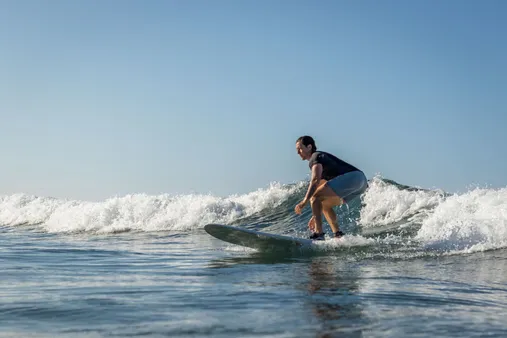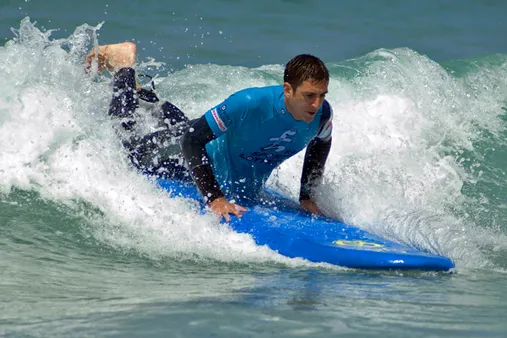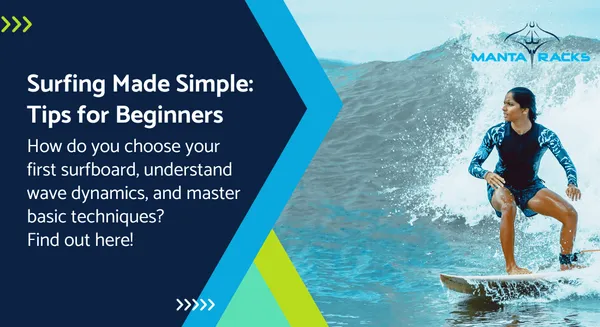Table of Contents
Welcome to Kizworld, your ultimate resource for learning How to learn the basic surfing skills and techniques. Whether you're a complete beginner or looking to improve your skills, we have everything you need to get started with this exciting sport. In this comprehensive guide, we'll cover everything from choosing the right equipment to finding the perfect location. We'll also provide tips for improving your skills and avoiding common mistakes beginners make. So grab your surfboard and let's hit the waves!
How to Learn the Basic Surfing Skills and Techniques: A Comprehensive Guide for Beginners
I. Mastering the Fundamentals of Surfing: A Comprehensive Guide to Basic Skills and Techniques
Mastering the Fundamentals of Surfing: A Comprehensive Guide to Basic Skills and Techniques
Essential Surfing Equipment
- Surfboard
- Leash
- Wetsuit
- Surf Wax
Finding the Perfect Surfing Location
- Beach Break
- Point Break
- Reef Break
Learning the Basics of Surfing
- Paddling
- Popping Up
- Riding the Wave
Advanced Surfing Techniques
- Duck Diving
- Bottom Turn
- Cutback
Safety Tips for Surfers
- Always Check the Conditions
- Never Surf Alone
- Be Aware of Your Surroundings
Common Mistakes Beginners Make
- Not Paddling Hard Enough
- Popping Up Too Early
- Not Keeping Your Weight Centered
Tips for Improving Your Surfing Skills
- Practice Regularly
- Take Lessons from a Qualified Instructor
- Watch Videos and Read Books About Surfing
II. Conquering the Waves: Essential Techniques for Beginner Surfers
Conquering the Waves: Essential Techniques for Beginner Surfers
Learn the Basics of Surfing
Before you hit the waves, it's important to learn the basics of surfing. This includes understanding the different parts of a surfboard, how to paddle out to the break, and how to pop up onto your board. You can learn the basics of surfing by taking lessons from a qualified instructor or by watching instructional videos online. Once you have a good understanding of the basics, you can start practicing in small waves. As you progress, you can start to learn more advanced techniques, such as how to ride a wave, how to do a cutback, and how to do an aerial. Surfing is a challenging but rewarding sport that can be enjoyed by people of all ages and skill levels.
- Surfboard: The most important piece of equipment for surfing. Choose a board that is the right size and shape for your skill level and the type of waves you'll be surfing.
- Leash: A leash attaches your surfboard to your ankle. This prevents your board from getting away from you if you fall off.
- Wetsuit: A wetsuit helps keep you warm in cold water. It also provides some protection from the sun and abrasions.
- Surf Wax: Apply surf wax to the top of your surfboard to provide traction. This helps you keep your feet on the board when you're riding a wave.
Finding the Right Location
Once you have the basic equipment, it's time to find the right location to surf. Look for a beach with waves that are appropriate for your skill level. If you're a beginner, look for small waves that are easy to catch. As you progress, you can start surfing bigger waves. You should also look for a beach that has a lifeguard on duty. This is especially important if you're surfing alone.
Pros | Cons |
|---|---|
Beach Break: These waves break over a sandy bottom. They are typically gentle and forgiving, making them ideal for beginners. | Beach Breaks can get crowded, especially during the summer months. |
Point Break: These waves break over a rocky point. They are typically longer and more powerful than beach breaks. | Point Breaks can be more difficult topaddle out to, and they can be dangerous if you don't know what you're doing. |
Reef Break: These waves break over a coral reef. They are typically the most challenging type of wave to surf, but they can also be the most rewarding. | Reef Breaks can be very dangerous, especially if you don't know what you're doing. |
"Surfing is a great way to get exercise, enjoy the outdoors, and challenge yourself. It's a sport that can be enjoyed by people of all ages and skill levels. If you're thinking about learning to surf, there are plenty of resources available to help you get started."- John John Florence
Learning the Basics of Surfing
The first step to learning how to surf is to learn how to paddle out. To paddle out, lie down on your surfboard and use your arms and legs to propel yourself through the water. Once you reach the break, turn around and face the shore. When you see a wave coming, start paddling towards it. As the wave gets closer, pop up onto your feet and start riding the wave. To ride the wave, keep your weight centered over the board and your knees bent. As the wave starts to break, lean back and use your arms to steer the board. When the wave is over, jump off the board and paddle back out to the break.
Advanced Surfing Techniques
Once you have mastered the basics of surfing, you can start learning more advanced techniques. Some of the most common advanced surfing techniques include:
- Duck Diving: Duck diving is a technique used to dive under a wave. This is useful for avoiding waves that are too big or powerful.
- Bottom Turn: The bottom turn is a maneuver that is used to change direction on a wave.
- Cutback: The cutback is a maneuver that is used to turn back up the wave.
Safety Tips for Surfers
- Always Check the Conditions: Before you go surfing, always check the conditions. This includes the wave height, the wind direction, and the water temperature.
- Never Surf Alone: Always surf with a buddy. This is especially important if you're new to surfing.
- Be Aware of Your Surroundings: Always be aware of your surroundings. This includes other surfers, boats, and marine life.
III. Safety First: Prioritizing Safety Measures in Surfing
Safety First: Prioritizing Safety Measures in Surfing
Surfing is an exhilarating sport, but it's important to prioritize safety. Always check the conditions before you surf, and never surf alone. Be aware of your surroundings and other surfers, and respect the ocean's power. If you're new to surfing, take lessons from a qualified instructor to learn the basics and avoid common mistakes.
Surfing can be dangerous, so it's important to take precautions. Never surf alone, and always let someone know where you're going and when you expect to be back. Check the weather and surf conditions before you go, and make sure you have the right equipment. Learn how to read the waves and understand the risks involved in surfing.
Tips for Staying Safe While Surfing:
- Check the conditions: Before you paddle out, check the waves, the wind, and the tide. Make sure the conditions are safe for your skill level.
- Always surf with a buddy: Surfing alone is dangerous, so always surf with at least one other person.
- Be aware of your surroundings: Keep an eye on other surfers, boats, and other hazards. Be aware of rip currents and other dangerous conditions.
- Respect the ocean's power: The ocean is a powerful force, so always respect its power. Don't surf in conditions that are beyond your skill level.
- Take lessons from a qualified instructor: If you're new to surfing, take lessons from a qualified instructor. They can teach you the basics of surfing and help you avoid common mistakes.
Every year, surfers are injured or killed in accidents. By following these safety tips, you can help reduce your risk of injury or death.
Common Mistakes Beginners Make:
- Not paddling hard enough: Paddling is essential for getting out to the waves. If you don't paddle hard enough, you'll never make it out.
- Popping up too early: Popping up too early is a common mistake that beginners make. Wait until you're in the right position before you pop up.
- Not keeping your weight centered: Keeping your weight centered is essential for balance. If you let your weight shift too far forward or back, you'll lose your balance and fall.
By avoiding these common mistakes, you can improve your surfing skills and stay safe in the water.
Related Posts:
- How to Learn the Basic Surfing Skills and Techniques
- Choosing the Right Surfboard for Your Skill Level and Style
- The Best Surfing Equipment and Accessories
IV. Maintaining Balance and Control: The Art of Riding the Waves
Maintaining Balance and Control: The Art of Riding the Waves
Surfing is a dynamic and challenging water sport that requires a unique blend of balance, coordination, and control. Once you've mastered the basics of paddling and popping up, the next step is to learn how to maintain your balance and control while riding the waves. This involves a combination of techniques, including proper stance and weight distribution, effective paddling, and the ability to read and react to the waves.
Mastering Proper Stance and Weight Distribution
A stable and balanced stance is crucial for maintaining control on your surfboard. Place your feet shoulder-width apart, with your front foot slightly forward of your back foot. Bend your knees and keep your weight evenly distributed between both feet. Your arms should be extended forward, with your hands resting comfortably on the sides of the board. Remember to relax and maintain a low center of gravity to enhance your stability.
Pro Tip: | Find Your Balance Point |
|---|---|
Mastering balance on a surfboard takes practice. | Start by practicing on dry land, standing on the board and shifting your weight from front to back and side to side. |
Related Article: Choosing the Right Surfboard for Your Skill Level and Style
Effective Paddling for Speed and Control
Efficient paddling is essential for catching waves and maintaining speed while riding. Keep your strokes short and powerful, using your core and upper body to generate force. Your arms should be close to your body, with your elbows tucked in. As you paddle, focus on keeping your body straight and aligned with the board. Avoid paddling too vigorously, as this can cause you to lose your balance.
- To generate power, push down on the water with your hands and pull your elbows back towards your rib cage.
- Maintain a steady paddling rhythm and adjust your stroke rate based on the size and speed of the waves.
- Keep your core engaged and your back straight to prevent fatigue and maintain good posture.
Related Article: Improving Your Balance, Coordination, and Endurance with Surfing
Reading and Reacting to the Waves
Reading and responding to the waves is a crucial skill for surfers of all levels. Pay attention to the size, shape, and direction of the waves to determine the best time to paddle and catch a wave. As you ride the wave, keep your eyes focused on where you want to go and adjust your weight distribution and paddling accordingly. Be prepared to adjust your stance, move your feet, or even jump off the board if necessary to maintain control.
Related Article: The Most Common Surfing Injuries and How to Avoid Them
V. Conclusion
With practice, patience, and perseverance, you can master the basic surfing skills and techniques and start enjoying the thrill of riding waves. Remember to always prioritize safety, be mindful of your surroundings, and respect other surfers. As you progress in your surfing journey, you'll discover new challenges and opportunities to learn and grow. Embrace the learning process, and you'll be amazed at how far you can go.